![]()
![]()
![]()
Use LEFT and RIGHT arrow keys to navigate between flashcards;
Use UP and DOWN arrow keys to flip the card;
H to show hint;
A reads text to speech;
68 Cards in this Set
- Front
- Back

|
Fuseli, The Nightmare, 1780; Romanticism
|
|
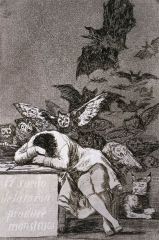
|
Goya, The Sleep of Reason Produces Monsters, 1800; Romanticism.
This etching expresses the emerging romantic sensibilities of the times by juxtaposing them with the rational objectivity of the neoclassical enlightenment as well as the turbulent social climate of the Napolionic wars in Spain during this time. |
|

|
Goya, Third of May 1808, 1814; romanticism
|
|

|
Gericault, Raft of the Medusa, 1820; Romanticism
This painting is a prime example of the romantic style due to the heroic composition of the figures, the celebration of the everyday person and the emotionally charged nature of the scene. |
|

|
Nash, Brighton Pavilion, 1820
|
|
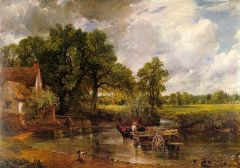
|
Constable, The Hay Wain, 1820
|
|

|
Delacroix, Death of Sardanapalus, 1830
|
|
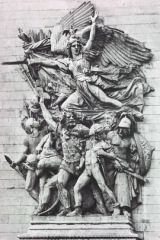
|
Rude, La Marseillaise, 1830
|
|
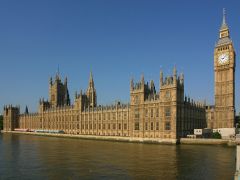
|
Barry and Pugin, Houses of Parliament, London, 1840
|
|
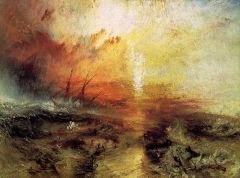
|
Turner, The Slave Ship, 1840
|
|
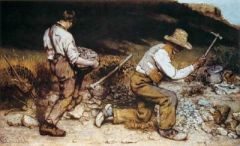
|
Courbet, The Stone Breakers, 1850
|
|

|
Hunt, The Awakening Conscience, 1850
|
|
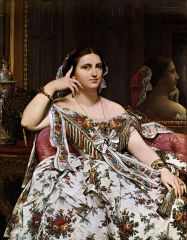
|
Ingres, Portrait of Mme. De Moitessier, 1856
This portrait is a commentary on the changing nature of society during the nineteenth century since the subject is not aristocratic, but rather, upper class. |
|
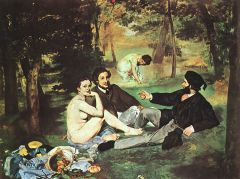
|
Manet, Luncheon on the Grass, 1860
|
|
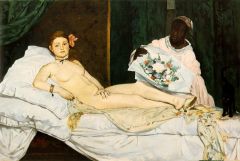
|
Manet, Olympia, 1860
|
|
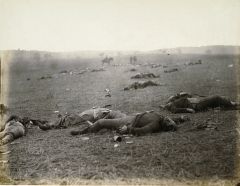
|
Timothy O'Sullivan, Harvest of Death, 1860
|
|
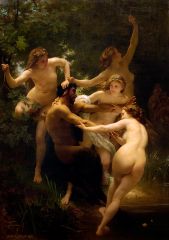
|
Bouguereau, Nymphs and a Satyr, 1870
|
|
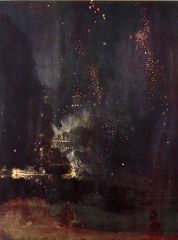
|
Whistler, Nocturne in Black and Gold, 1870-1880
|
|
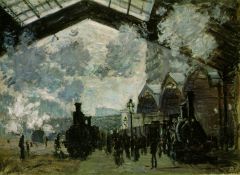
|
Monet, Gare St. Lazare: Arrival of a Train, 1880
|
|
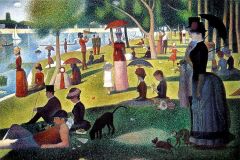
|
Seurat, Sunday Afternoon on the Island of La Grand Jatte, 1880-90; Pointillism
Serat used unblended Pointillism, dots of juxtaposing colour, to produce an overall suggestion of one hue and the leisurely poses as well as the mixing of social classes is a commentary on the changing nature of modern society. |
|
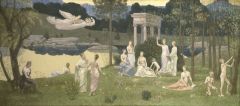
|
Puvis de Chavannes, The Sacred Grove, 1880
|
|
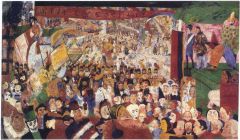
|
Ensor, Christ's Entry into Brussels in 1889, 1888
|
|
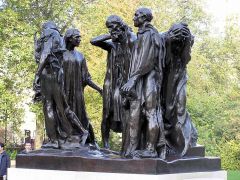
|
Rodin, Burghers of Calais, 1890; Realism
This sculpture of a medieval event shown in the more realistic light of grim resignation rather than a heroic martyrdom, creating a more personal relation of the subjects to the viewer. |
|
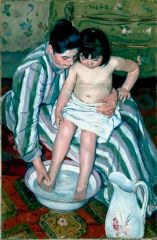
|
Cassatt, Child's Bath, 1890
|
|
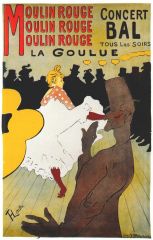
|
Toulouse-Lautrec, La Goulue, 1890; Post-Impressionism
This post-impressionistic print is a commentary on modern, cafe life of the late nineteenth century, an example of promotional art, and demonstrates the effect of japanese prints on european style through the use of framing, cropping and |
|
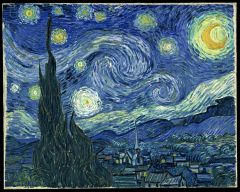
|
Van Gogh, Starry Night, 1890
|
|
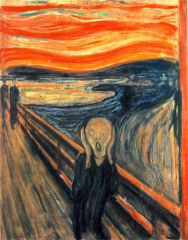
|
Munch, The Scream, 1890
|
|

|
Gauguin, Who are we? Where do we come from? Where are we going?, 1900
|
|
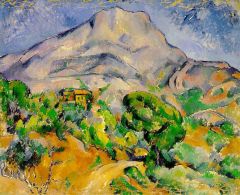
|
Cezanne, Mont Sainte-Victoire, 1900
|
|
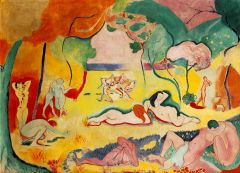
|
Matisse, The Joy of Life, 1900-1910; Fauvism
|
|
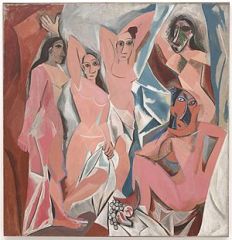
|
Picasso, Demoiselles d’Avignon, 1910
|
|
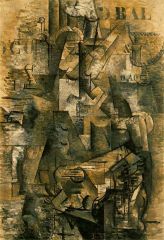
|
Braque, The Portuguese, 1910
|
|
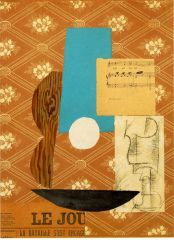
|
Picasso, Guitar, Sheet Music, and Wine Glass, 1910
|
|
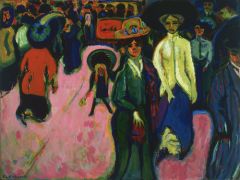
|
Kirchner, Street, Dresden, 1910
|
|
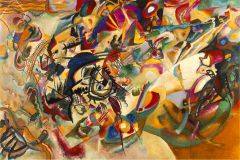
|
Kandinsky, Composition VII, 1910
|
|
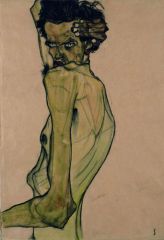
|
Schiele, Self-Portrait, 1910
|
|
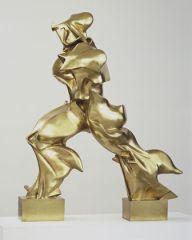
|
Boccioni, Unique Forms of Continuity in Space, 1910
|
|
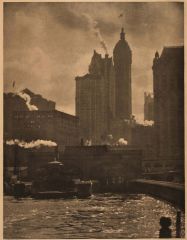
|
Stieglitz, City of Ambition, 1910
|
|

|
Frank Lloyd Wright, Robie House, 1910
|
|
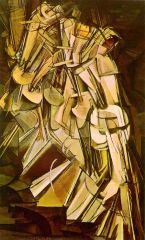
|
Duchamp, Nude Descending a Staircase, 1910
|
|
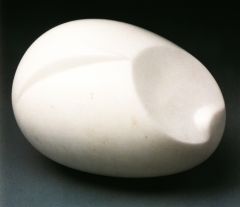
|
Brancusi, The Newborn, 1910-1920
|
|
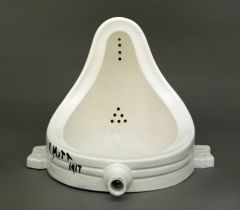
|
Duchamp, Fountain, 1920
|
|
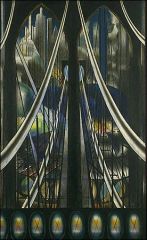
|
Stella, Voice of the City, 1920
|
|
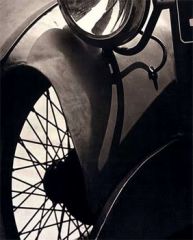
|
Paul Strand, Wire Wheel, 1920
|
|
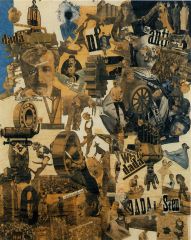
|
Hoch, Cut with the Kitchen Knife…, 1920
|
|
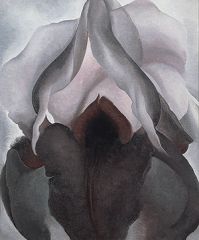
|
Georgia O'Keeffe, Black Iris III, 1930
|
|
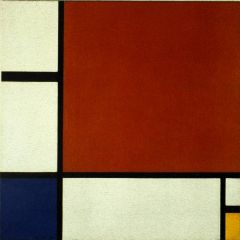
|
Mondrian, Composition No. II (with Red, Blue and Yellow), 1930
|
|
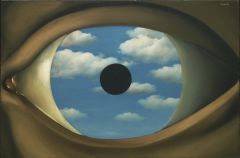
|
Magritte, The False Mirror, 1930
|
|

|
Le Corbusier, Villa Savoie, 1930
|
|

|
Van Alen, Chrysler Building, 1930
|
|
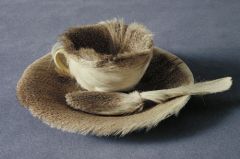
|
Oppenheim, Object (Luncheon in Fur), 1935-1940; surrealism
This surrealist work is an homage to Duchamp's assisted ready mades and juxtaposes the opposing tactile nature of ceramic and fur and forces the viewer to imagine the tactile response to the object. |
|
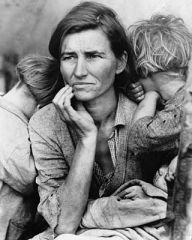
|
Dorothea Lange, Migrant Mother, California, 1935-1940; photography
This portrait was a government commission to document current events and comments on the effect of the great depression. |
|
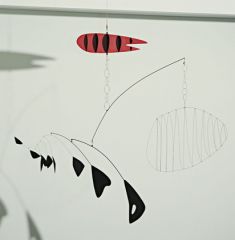
|
Calder, Lobster Trap and Fish Tail, 1940
|
|
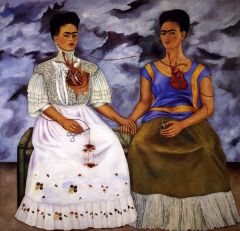
|
Frida Kahlo, The Two Fridas, 1940
|
|

|
Pollock, Autumn Rhythm Number 30, 1950
|
|
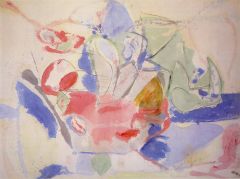
|
Helen Frankenthaler, Mountains and Sea, 1950
|
|

|
Francis Bacon, Head surrounded by Sides of Beef, 1950
|
|
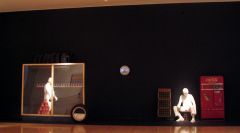
|
George Segal, The Gas Station, 1960; pop-art, instillation.
This instillation is a commentary on the life of the time. |
|

|
Andy Warhol, Gold Marilyn Monroe, 1960
|
|

|
Kelly, Red Blue Green, 1960
|
|
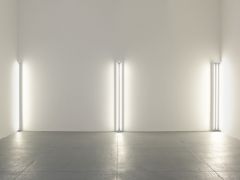
|
Flavin, the nominal three, 1960
|
|
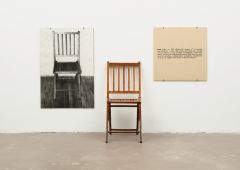
|
Kosuth, One and Three Chairs, 1960-1970; Instillation
This instillation is a conceptual and intellectual commentary on our perceptions of an everyday thing. |
|

|
Christo and Jeanne-Claude, Running Fence, 1970-1980
|
|
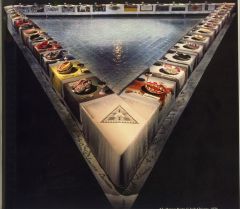
|
Judy Chicago, The Dinner Party, 1980; Instillation
This sculpture is a celebration of thirty-nine important, female, historical figures is a commentary on the feminist revolution and the physical femininity of each of the women |
|

|
Maya Lin, Vietnam Veterans Memorial,1980
|
|
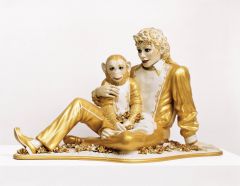
|
Jeff Koons, Michael Jackson and Bubbles, 1987; Pop-art
The size and scale of this piece, lifts it out of the realm of kitch and imposes a greater sense of grander on the piece and comments on the modern shift of worship from religious icons to pop idols. |
|

|
Frank Gehry, Guggenheim Museum Bilbao, 1992
|
|
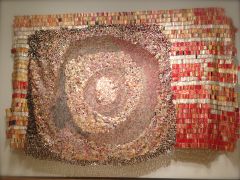
|
El Anatsui, Dzesi II, 2006
|

